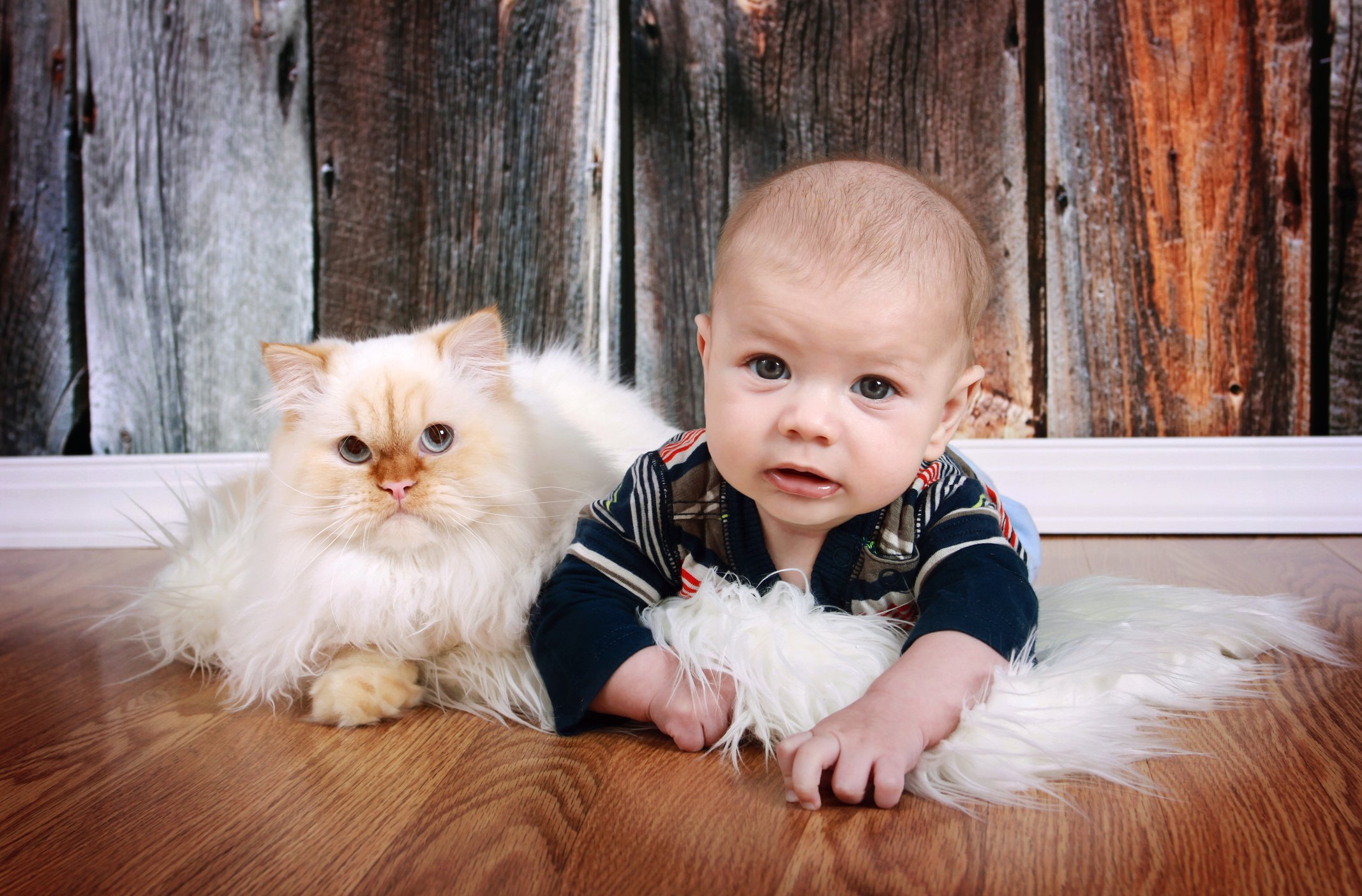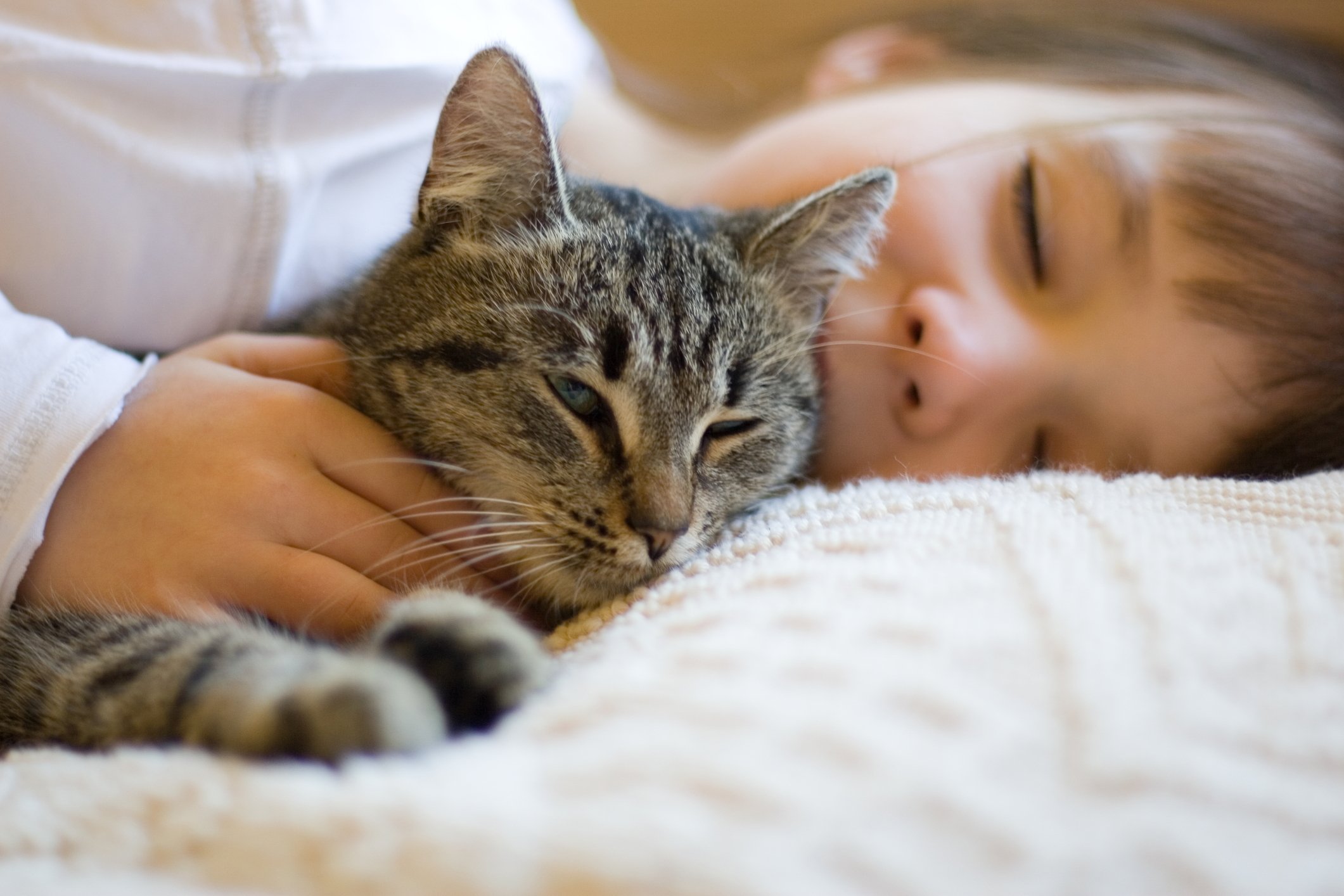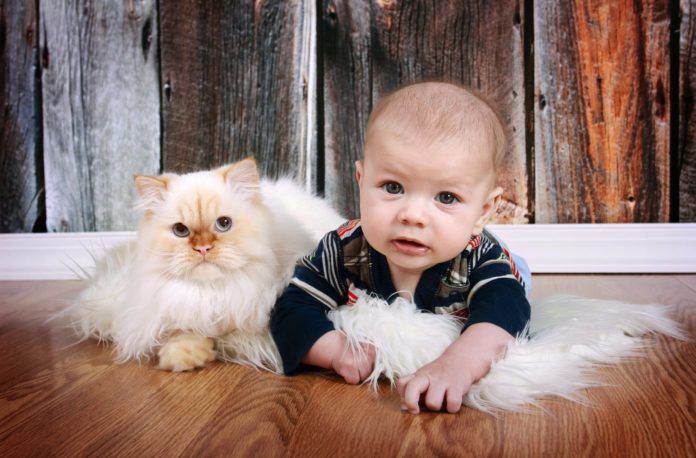Dreamstime.com

Bringing a kitten or cat into a home with a baby — or vice versa — can be a beautiful experience for your family. The majority of the time, it will go smoothly and become a positive relationship, explains Nicholas H. Dodman, BVMS, DACVB, Professor of Behavior Pharmacology and Animal Behavior at Tufts Cummings School of Veterinary Medicine, adding, “Of course, I’ve heard of kids getting scratched, but it’s not one of the more common behavior problems.”
You can make it go even more smoothly by choosing a family-friendly kitten, making her feel at home, carefully introducing her to your child, and redirecting little problems before they get bigger. It all starts with understanding feline temperament. “Cats are not all the same,” says Dr. Dodman. “They come in different flavors.”
Understanding Temperament
Professor Dodman relies on a scientific classification developed by animal behaviorists Dennis C. Turner and Patrick Bateson to describe the feline personality spectrum:
Alert. A cat who scores high in this category is “active, curious, investigative, exploratory, playful,” says Dr. Dodman.
Sociable. “Cats range from the reclusive to the hail-fellow-well-met,” he says. A sociable cat “gets on well with other people and cats.”
Equable. This term describes “evenness of mood,” he explains. A cat low in this trait might be “mercurial” and prone to “exploding into aggression,” while one who rates high would be “tolerant, long-suffering, and unlikely to fly off the handle.”
The ideal cat to introduce to a family with young children would rate high on all traits. “Then you will most likely have a nice cat and won’t have many problems introducing it into your home,” he says. On the other hand, he says, a kitten or cat who “is poor in alertness, known to be somewhat antisocial — hisses and runs and hides — and is so volatile that when he sees another cat in the window he screams and erupts, likely won’t be good at adapting.” The first step, then, is selecting a kitten with the best temperament for a family (see related sidebar on page 12).
Nobody, and no cat, is perfect. And that’s fine, especially if you take a few steps to make sure the relationship starts out right. That includes teaching your children how to behave around this new pet. “A cat won’t come out of left field and attack a child,” says Dr. Dodman. “But if a child does something that seems threatening, the cat could react and that could be trouble.”

Dreamstime.com
Kitten/Baby Interactions
The best approach depends on the age of your child or children:
Babies. This is actually the easiest situation. “Babies don’t do much until they start to crawl,” says Dr. Dodman. “They lie in the crib, or in their mothers’ arms. Most self-respecting cats consider babies not that interesting.”
You do need to take steps to make sure a kitten — and, especially, a cat — doesn’t sleep in the crib with a child. There are many myths about this, including one that cats “suck” the breath of babies. “Nonsense,” says Dr. Dodman. But cats may be attracted to the nice warm soft crib, with a sweet-smelling baby, perhaps redolent of milk. And babies don’t have strong muscles to keep their rib cages expanding and contracting — especially if a seven-pound cat is lying on top. Solution? “When the baby is not being supervised, use a cat net over the crib,” he suggests. “You can keep the bedroom door closed, but doors can open accidentally.”
Toddlers on up. Once babies start crawling, and, especially, climbing and walking, there can be more issues. Problems can arise if you have a cat who is not very equable, and who may show fear around children.
Don’t wait until your child carelessly picks up the cat and gets scratched. You should supervise the interaction, and be ready to intervene quickly to prevent a mishap. “If the child is very invasive, it may be better to control the child,” says Dr. Dodman. “If your cat not equable, you can still have the child and cat together, but interactions need to be supervised.”
Time for introductions
It all starts with the right “getting to know you” moment. When you bring a kitten or cat home, you should allow your new pet to get acclimated first. “Cats are territorial, so if you transport them, it’s a shock to the system,” says Dr. Dodman. “They have to get used to the new place.” Especially if you have a big house, start with one room. “Put the cat in a room with a nice bed, food, water and toys. Go in there and interact and let her settle in.”
Once your cat has had a couple of days to acclimate, bring your baby or child in. “If your child is verbal, say something like, ‘This is the way you pet a cat’ and demonstrate it,” he suggests. “Let your child know that the cat will appreciate it if you bring her a treat. Supervise.” Once cat and child have been introduced, gradually expand the area in the house where the cat can go. “It’s like getting into a swimming pool a few inches at a time.”
Handling Problems
Your rambunctious toddler inadvertently corners the not-so-equable kitten, who reacts by scratching or biting. What now? “Find ways to encourage a better relationship,” suggests Dr. Dodman. For example, you may want to have your child feed the cat a particularly delicious food that comes only from the child. This is called counter-conditioning.
If the kitten or cat is prone to clawing and scratching, make sure you keep the nails trimmed. You may want to buy a product such as SoftClaws (softclaws.com), which are tiny plastic nail caps for nails; they minimize the effects of clawing. “Declawing is not an option,” says Dr. Dodman. “We don’t declaw cats here at Tufts to address scratching issues. For one thing, if a cat is declawed, it’s more likely to bite.”
On the rare occasion when there is irreparable bad chemistry between a child and a cat — or a history of harmful interactions — you may need to consider re-homing the new cat. But while Dr. Dodman has seen this necessitated by cat/cat feuding, he’s never seen a case where it was needed because of cat/child problems.
A Wonderful Relationship
Once your cat and child get to know each other, expect a warm relationship. “Having a pet — forming a bond with another species — is a very positive thing for a child,” says Dr. Dodman. He recalls his black cat Cinder who would frequently be picked up by his then-four-year-old daughter. “She’d wander around holding the cat under the armpits, feet and tail almost touching the floor. They were tremendous friends.”
Living with a cat helps children understand that we don’t live in this world “in splendid isolation,” he continues. “When you share your existence with a cat or a bird or a dog, you’re more respectful of animal life. We mammals share this planet. I think people who have that empathy and respect for animals turn out to be nicer human beings.” — Catnip staff




